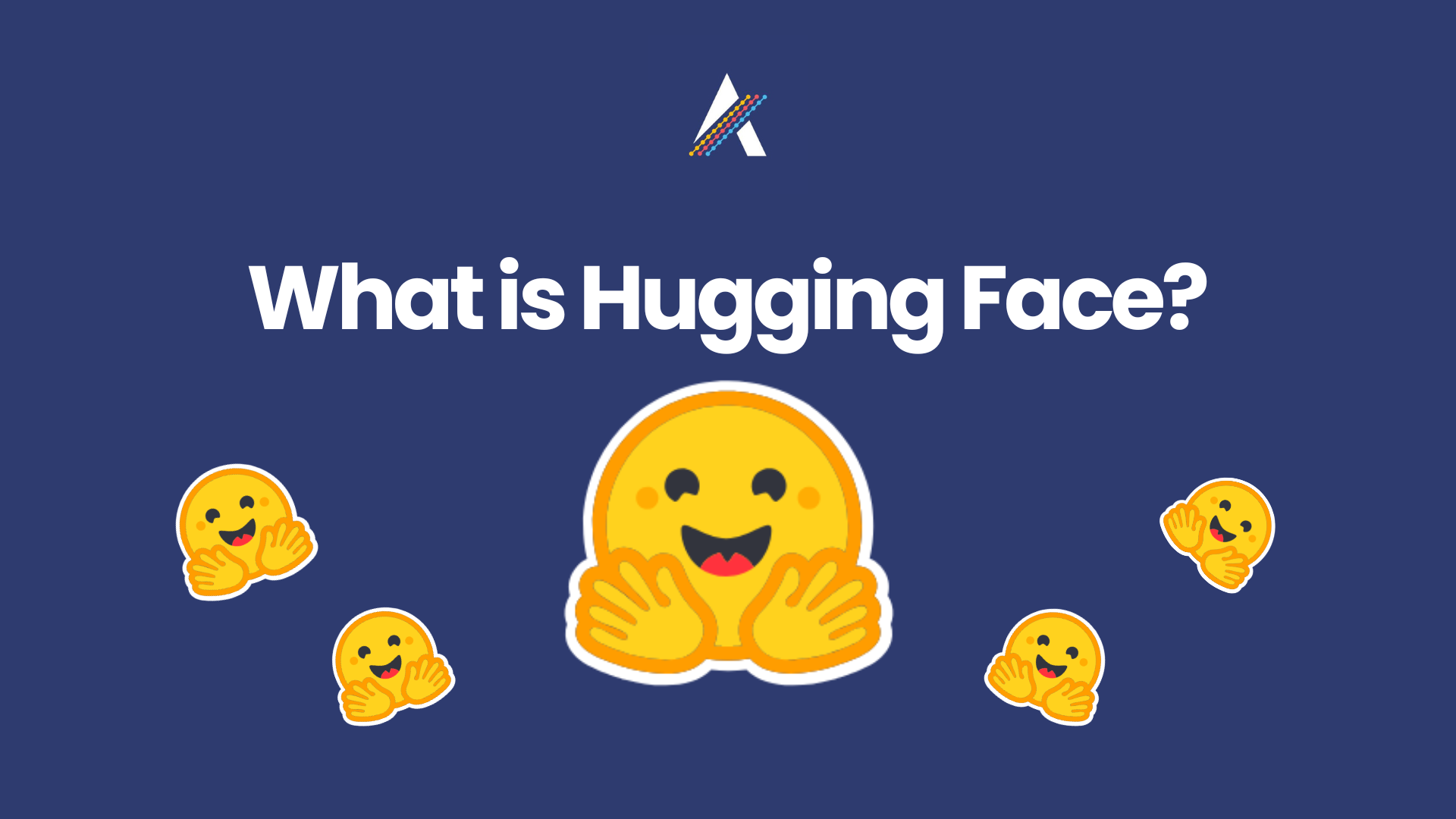What is Hugging Face? A Friendly Dive Into the AI Powerhouse
If you’ve been anywhere near the world of AI or machine learning (ML) in the past few years, you’ve likely heard about Hugging Face. But what exactly is it? Is it just another tech company? A toolkit? Or a vibrant community? The truth is, Hugging Face is all that and more—a game-changer in how AI gets built, shared, and used.
The Heart of Hugging Face: Democratizing AI
Hugging Face started in 2016 as a chatbot company. But the founders soon realized the real magic lay not just in building AI, but in empowering others to build smarter AI faster. Today, Hugging Face is a leading AI platform and open-source community that offers tools, pre-trained models, datasets, and a unique ecosystem for developers, researchers, and businesses.
Picture Hugging Face as the GitHub for AI.Hugging Face It hosts a vast library of ready-to-use models for natural language processing (NLP), computer vision, audio analysis, and even multimodal tasks combining images, sound, and text. Instead of starting from scratch—a process that can take months and vast computational resources—users can download or customize models in just a few lines of code. This accessibility speeds innovation and lowers the barrier to entry for beginners and experts alike.
Hugging Face’s Core Components
1. Transformers Library
This is the crown jewel. The Transformers library provides over 40 cutting-edge model architectures, including household names like BERT, GPT, T5, and newer vision-based models such as Vision Transformers (ViT). It supports popular deep learning frameworks like PyTorch and TensorFlow, making it versatile and widely adopted.
Whether you’re building a chatbot, translating text, summarizing documents, or analyzing sentiments, the Transformers library has a pre-trained model for you. Plus, it includes easy-to-use APIs that let you fine-tune these models on your data, tailoring them to your exact needs.
from transformers import pipeline
# Simple sentiment analysis example
classifier = pipeline("sentiment-analysis")
result = classifier("Hugging Face makes AI accessible and fun!")
print(result) # Output: [{'label': 'POSITIVE', 'score': 0.999}]
2. Model Hub
With over 1 million pre-trained models, the Model Hub is the largest model repository in the AI world. It’s a treasure trove where developers can share their models and datasets or find what others have built. Filtering options by task, language, and license make it easy to discover exactly what you need, whether for speech recognition, text generation, or image classification.
3. Datasets and Evaluation
Beyond models, Hugging Face also provides the Datasets library to access and share tens of thousands of datasets for training and benchmarking. Coupled with the Evaluate library, users can seamlessly benchmark model performance on standard tasks, ensuring reliability and improvements.
4. Spaces
Spaces offer a place to create and host interactive AI demos using simple UI tools. This means companies and enthusiasts can quickly showcase applications powered by Hugging Face models, from chatbots to image generators, without complex infrastructure.
Hugging Face in 2025: What’s New and Exciting?
- Multimodal AI: Supports models that understand and generate across media types—text, images, audio, and video.
- Federated Learning: Privacy-focused training happens on-device or local servers without sharing raw data externally.
- Explainable AI (XAI): Tools help users understand why AI makes decisions, crucial in sectors like finance and healthcare.
- Scalable Distributed Training: Integration with frameworks like DeepSpeed allows training massive models efficiently.
- Reinforcement Learning Integration: Supports models that improve by interacting with environments or users.
Why Hugging Face Matters
In simple terms: Hugging Face is democratizing AI. Before platforms like this, only big tech companies with mountains of data and computing power could create and deploy sophisticated AI. Today, a hobbyist, a nonprofit, or a startup can harness state-of-the-art AI with minimal resources and expertise.
Plus, Hugging Face’s commitment to open science means that research breakthroughs get shared rapidly, helping the entire AI community progress together.
Who Uses Hugging Face?
- Researchers and Academics: For experimenting with the latest architectures and datasets.
- Startups and Enterprises: To build AI-powered products without costly infrastructure.
- Developers and Engineers: To quickly implement powerful features in apps.
- Students and Educators: For learning and teaching machine learning concepts.
- AI Enthusiasts: To explore and contribute to the expanding library of models.
Hugging Face vs. Other AI Platforms
| Feature | Hugging Face | Competitors like OpenAI / Google AI |
|---|---|---|
| Open Source | Mostly open source & community-driven | Mix of open and proprietary |
| Model Variety | 1M+ models, wide range of languages & modalities | Often focused on proprietary models |
| Customization | Extensive fine-tuning capabilities | Fine-tuning sometimes limited or paid |
| Community | Vast, active with hubs for collaboration | Large but less open collaboration |
| Use Cases | NLP, vision, audio, multimodal AI | Wide AI but sometimes less accessible |
| Cost | Free models and libraries + paid tiers | Pay-as-you-go pricing models |
| Deployment | Inference API, Spaces, libraries | APIs with model access only |
Getting Started with Hugging Face: A Gentle Guide
- Create an Account: Sign up at huggingface.co to access the Model Hub and host your projects.
- Explore Models: Browse by task or use the search bar to find relevant pre-trained models.
- Install Library: Use
pip install transformers datasetsin your environment. - Try Pipelines: Use the pipeline API for quick experiments like sentiment analysis, translation, or image classification.
- Fine-Tune: Use your own datasets and Hugging Face tools to optimize the model for specific needs.
- Deploy: Share your project via Spaces or use the Inference API for production apps.
Frequently Asked Questions (FAQs)
Q1: Is Hugging Face free to use?
Yes, many open-source models and libraries are free. Paid services exist for enterprise-scale deployments.
Q2: Do I need to be an AI expert to use Hugging Face?
Not at all! It’s beginner-friendly with simple APIs and tutorials, yet powerful enough for experts.
Q3: Can I use Hugging Face models for languages other than English?
Absolutely. It supports over 100 languages with multilingual models like mBERT and XLM-R.
Q4: How does Hugging Face help with AI ethics and responsible use?
It promotes transparency with detailed model cards, community guidelines, and tools for explainability and bias detection.
Q5: Can I deploy Hugging Face models on mobile or edge devices?
Yes, with optimized models and federated learning, they can run efficiently on edge devices while ensuring privacy.
Conclusion
Hugging Face has revolutionized how AI is built and shared. Whether you’re a newbie discovering AI or a seasoned developer seeking cutting-edge models, it’s the place to explore, learn, and create. The future of AI belongs to everyone—and Hugging Face is making that future accessible today.

Sandeep Kumar is the Founder & CEO of Aitude, a leading AI tools, research, and tutorial platform dedicated to empowering learners, researchers, and innovators. Under his leadership, Aitude has become a go-to resource for those seeking the latest in artificial intelligence, machine learning, computer vision, and development strategies.


